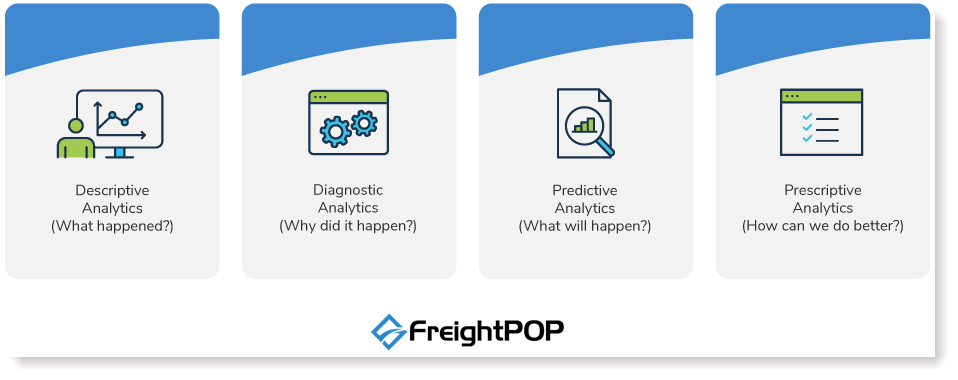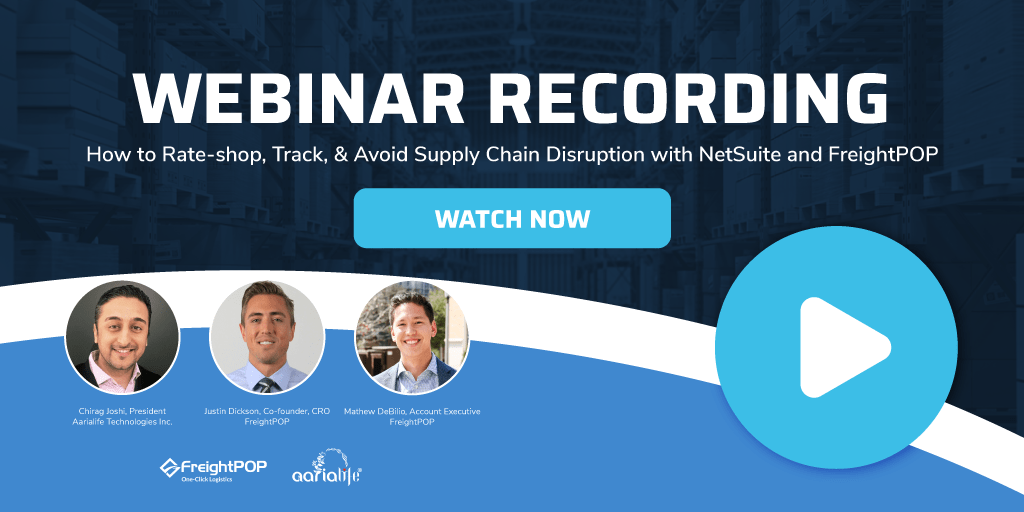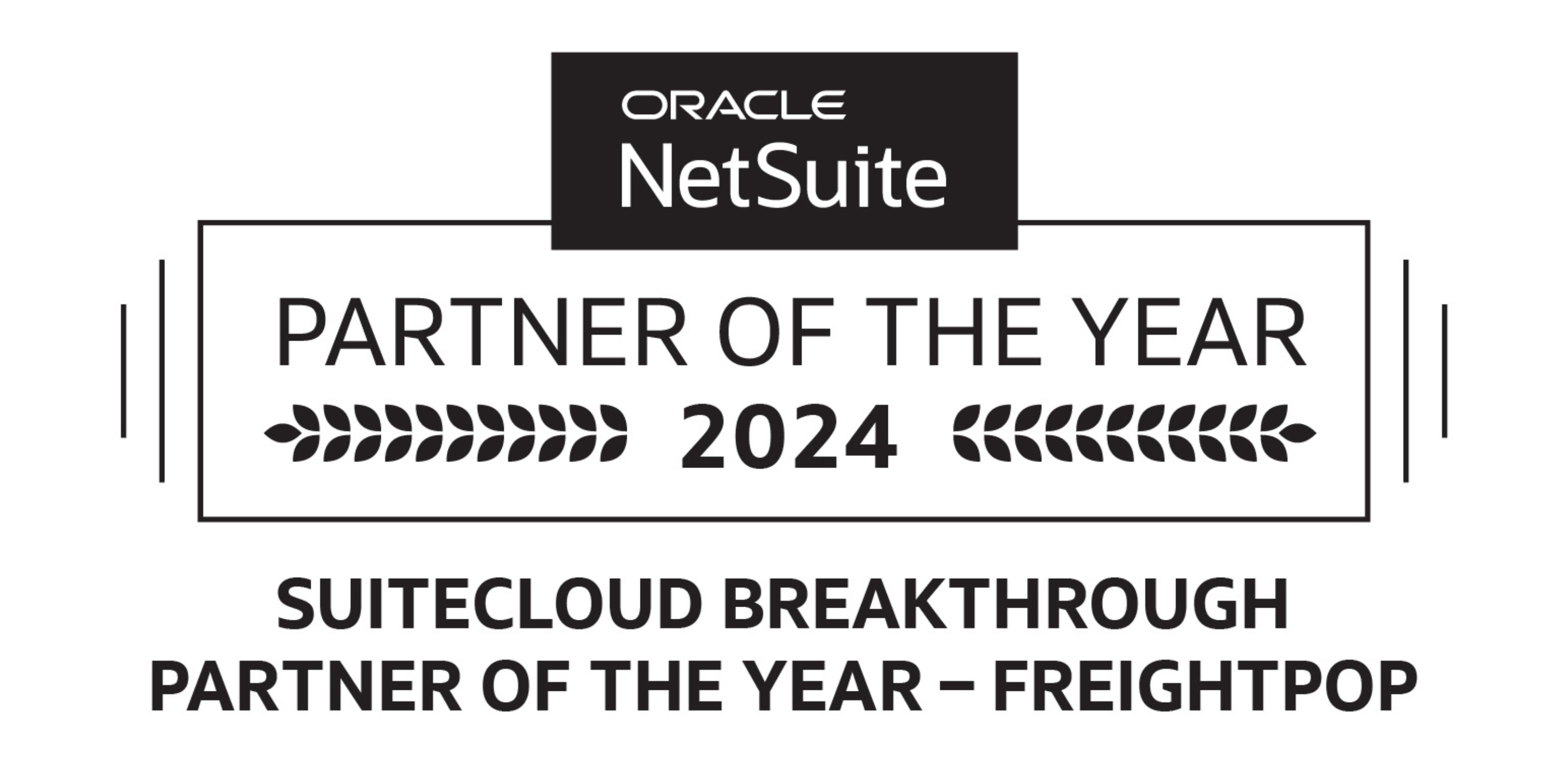Webinar Recording - Get Stronger Supply Chains Now Heading Into Q4
[Webinar Recording] Learn how to rate-shop, track, and avoid supply chain disruption heading into Q4 with powerful tools and integrations through...

Logistics analysts expect some relief in managing supply chains but are divided on whether that will come in 2023 or 2024. As companies streamline to cope, they are looking for every advantage.
Even though there has been some easing of recent disruptions, new risks are emerging:
Ongoing delays and bottlenecks cost money and damage precious customer relationships. Minimizing disruptions through a strong transportation management system (TMS) has never been more crucial.
If you work with NetSuite®, FreightPOP's TMS provides robust integration with your enterprise resource management (ERP) software to help you manage and automate logistics to create significant savings.
NetSuite has native integrations for parcel shipments using parcel carriers like USPS, FedEx, and UPS, but it does not have wide access to FTL, LTL, and International ocean and air shipping capabilities. With the integration to FreightPOP, customers can handle their full spectrum of shipping needs and more easily compare rates across multiple carriers, modes, and borders to optimize profitability.
Caleb Schmitz, CMO for NetSuite + SuiteCommerce, explains:
“(This integration) allows businesses like eCommerce to increase overall margins on orders, depending on which one is going to provide the best rate. This is a more responsive and dynamic solution that provides more agility and resilience for enterprise customers."
One of the more valued assets NetSuite customers cite is the ability to push pricing from their eCommerce directly into FreightPOP, with the capability to do EDI transactions, generate an ESN, and push information back to their customers.
Another top asset is FreightPOP's ability to scale weights, which most shipping platforms do not provide. FreightPOP can scale weights automatically and import that data into NetSuite.
It takes 10-15 minutes to set up and generate tokens within FreightPOP. Once you do, you can create an instant connection to NetSuite products. This allows you to either import sales orders or item fulfillment. The integration pushes and pulls data every 10 minutes and imports any new sales order or item fulfillment into the Sales Order Management Screen, including data such as:
You can further customize views for more detailed information.
You can also ship orders directly from the Order Management Screen if you have included shipment details within the order and have package weight turned on in NetSuite.
Especially in today’s tight capacity environment, shippers need to look at every possible option for moving freight to assure optimal rates. Even if you have contracts with carriers and brokers, they may not be able to deliver on the promises they’ve made or provide the services they have in the past.
Caleb Schmitz adds:
“Integrating FreightPOP with NetSuite provides increased functionality and better ways to shop shipping rates across multiple carriers. Then, companies can compare more prices than just those from the three primary carriers.”
FreightPOP gives NetSuite customers access to powerful analytics, geared specifically for the needs of manufacturers, distributors, eCommerce, and 3PLs.
One example of this is their advanced analytics features which use machine learning models and AI algorithms to help companies ship smarter and optimize supply chains. By utilizing intelligent logistics data, you can continually optimize your freight handling using multiple analytical models, including:
Descriptive analytics look at what’s happened. This allows you to leverage historical data to analyze carrier lane data, carrier spending, quote and invoice discrepancies, and shipping rate compliance.
Diagnostic analytics help you understand why things happen, so you can improve performance and avoid making costly errors in the future.
Predictive Analytics allows you to run multiple what-if scenarios to forecast expenses. This helps you understand the impact of trends so you can make adjustments to save money.
Prescriptive Analytics looks for trends and patterns that may not be obvious. By identifying causal relationships, you can create best practices. A recommendation engine will automatically help you identify areas to save money and streamline operations.

Combing the power of NetSuite ERP with FreightPOP, you can realize several significant benefits, including:
FreightPOP allows you to shop for the best freight rates, shop from all modes, and track every inbound and outbound leg as part of your NetSuite integration. You can also conduct manual and automated audits to find hidden savings.
To learn more about how NetSuite and FreightPOP integrate, download our recorded webinar, Learn How to Rate Shop, Track, and Avoid Supply Chain Disruptions. The webinar covers:

[Webinar Recording] Learn how to rate-shop, track, and avoid supply chain disruption heading into Q4 with powerful tools and integrations through...
.png)
In an era where efficiency and speed are the benchmarks of success, the logistics and supply chain industry is undergoing a significant...

If you're a business running on NetSuite, you already understand the value of a connected ERP system. But when it comes to shipping, many NetSuite...